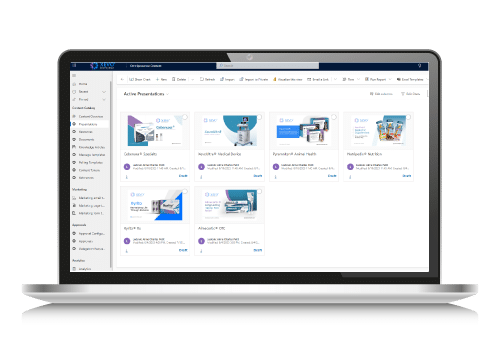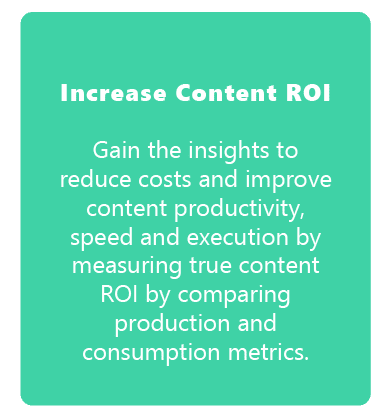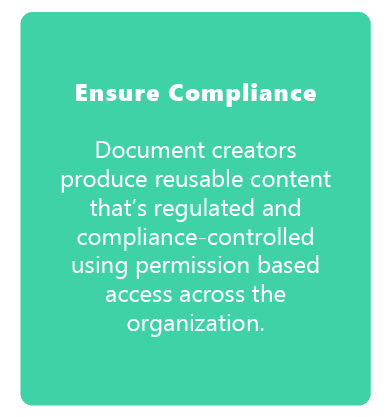In the intricate landscape of the pharmaceutical industry, where groundbreaking discoveries and innovative research are the lifeblood, effective content management emerges as a critical cornerstone. The pharmaceutical sector is one of the most complex and highly regulated industries globally. Regulatory authorities, non-governmental organizations, and internal quality control divisions are at the forefront of these regulations.
Content management in the pharmaceutical industry is not just about organizing files or keeping track of documents. Pharmaceutical content management (Pharma Content Management) is about it’s about harnessing volumes of invaluable insights, safeguarding intricate intellectual properties, meeting the stringent standards of regulatory compliance, and streamlining the communication of life-altering information. As the industry propels forward, leveraging this system is not merely a luxury—it’s a necessity for companies aiming to remain at the forefront of innovation and safety.
As the pharmaceutical domain grows exponentially larger each year, understanding the essence of content management becomes paramount, not only to manage the sheer volume but also to decipher, utilize, and preserve the vital information it holds. As we move towards 2024, research indicates the global data pool is set to reach 163 zettabytes per year. However, many pharmaceutical companies are struggling to capitalize on their data, to glean relevant insights or understand which data and what to focus on.
To navigate this industry, having a single unified digital content management solution to handle all pharma information is mission-critical. This guide will discuss the benefits and challenges related to pharmaceutical content management. With 10 effective content management strategies, we’ll provide a roadmap for successful navigation in 2024 and beyond.
What is Pharmaceutical Content Management?

Pharmaceutical document management is defined as a centralized repository system that captures, stores, and tracks all documents pertaining to the development, production, and distribution of pharmaceutical products to ensure that everyone uses the latest, approved version and makes it easier to share knowledge and information across organizational and geographical boundaries. This content can range from:
Content management in the pharmaceutical industry is not limited to organizing or storing information. It’s about ensuring that knowledge and information are accurate, up-to-date, managed correctly and adheres to multiple stringent regulatory organizations and their guidelines. The correct handling of pharmaceutical content is crucial to ensure patient safety with therapeutic drugs and treatments and also to curb misinformation or misleading efficacy statements.
The use of specialized content management solutions (CMS) in pharma helps with:
As the pharmaceutical industry has moved towards digital transformation, it is imperative that an effective automated content management solution forms part of the pharma company’s toolbox to adapt to the digital environment.
What are the Benefits of Effective Pharma Content Management?
Content management holds paramount importance in the regulated world of pharmaceuticals. In this sector, content bridges groundbreaking therapeutic research and the patients waiting for treatments. Effective Pharma content management streamlines operations, enforces compliance, and strengthens data security.



The benefits of integrating a content management solution are endless, let’s take a closer look at what some of these are:
1. Regulatory Compliance
The pharmaceutical industry operates within one of the most stringent regulatory environments. These regulations, be it the FDA in the US, the EMA in Europe, or other regional bodies, are in place to set strict rules and regulations to ensure pharmaceuticals’ safety, efficacy, and quality.
Regulatory bodies in the field of marketing authorization meticulously oversee every stage of a drug’s lifecycle, from its early development and manufacturing to its marketing and post-market monitoring. Their jurisdiction also extends to content creation, dictating guidelines for product packaging, labeling, and promotional materials to ensure all information, claims, and images align with specific compliance standards in a multifaceted, tightly interwoven ecosystem.
Adhering to these stringent regulations transcends the mere avoidance of penalties; it’s pivotal in sustaining the confidence of healthcare professionals, patients, and the general public. In the realm of pharmaceuticals, compliance is synonymous with credibility.
Therefore robust Pharma Content Management is pivotal in ensuring adherence to these regulations.
Content management solutions safeguard against regulatory breaches through:
Not adhering to content management guidelines exposes a company to legal penalties and lawsuits, and can cause operational disruption through a product recall. Beyond the financial impact, it can damage a company’s reputation and trustworthiness.
2. Efficiency through Collaboration
Effective Pharma Content Management plays a critical role in streamlining operations. Such systems enable organizations to create, manage, and distribute essential documents and data seamlessly across various departments and geographical locations. By centralizing all content-related assets in a single, accessible platform, a Pharma CMS eliminates the risks of data silos, ensures consistency of information, and facilitates expedient content retrieval.
Furthermore, it supports collaborative efforts by allowing multiple stakeholders to work on documents simultaneously, maintaining version control and ensuring traceability of all modifications. The automated workflows embedded within the system ensure that content moves efficiently through predetermined paths, from creation, review, and approval, to dissemination and archival, thereby ensuring compliance with regulatory guidelines.
The operational efficiency derived from proficient content management translates into tangible cost savings. Companies can use resources well when they complete tasks accurately. This leads to boosting profitability and productivity.
3. Faster Time to Market
The pharmaceutical industry is fiercely competitive, with companies racing to introduce groundbreaking products. Adept Pharma Content Management plays a pivotal role in this race. Streamlining and automating content processes and workflows, from crucial research data to regulatory documentation, ensures operational efficiency. This efficiency can speed up product development and launch timelines.
Exeevo found that 40% of HCPs were discontent with the current content, while 7% expressed high satisfaction. This void presents a golden opportunity for pharma firms to differentiate themselves by churning out relevant scientific information that educates and alleviates the therapeutic value burden on the HCP.
The CMS facilitates the swift creation, approval, and dissemination of regulatory documentation, marketing materials, and product information, enabling teams to collaboratively work in a coordinated manner and ensure consistency across various channels and markets.
As an example: Pharma marketing teams can produce personalized precise and relevant marketing content by synergizing with Medical Affairs. This collaboration ensures the content offers unmatched value to its intended audience.
In an industry where every moment counts, efficient content management becomes a defining factor for success. The system ensures that all stakeholders, from research and development to regulatory affairs and marketing, have instant access to accurate, up-to-date, and compliant content, enabling faster decision-making, and streamlined compliance, and thus, accelerating the overall time-to-market for new pharmaceutical products.
Today’s Pharma Content Management Challenges
The pharmaceutical industry experiences a constant flow of new information and discoveries. Managing content within this sector is no easy task. With the industry’s ever-changing nature, there are always fresh challenges to tackle.
Adapting to Digital Transformation
Digital transformation is reshaping the Life Sciences sector. It is making data-driven decisions and personalized patient care more attainable than ever. Yet, pharma companies grapple with updating their content management strategies to this new digital era.
The surge in data from electronic health records and wearables offers rich insights. However, integrating these with emerging technologies like AI and IoT poses difficulties.
Moreover, the move towards patient-centric approaches demands a seamless digital transition. Staying ahead in technology has become the key to maintaining a competitive edge for pharma companies.
The Role of Technology in Pharma Content Management
Technology has revolutionized many industries and pharma is no exception. In content management, tech tools have paved the way for more efficient, accurate, and streamlined processes. Let’s take a look at how tech is changing Pharma Content Management.
1. Generative AI: Beyond Ordinary Assistance
Generative AI is a game-changer in the Life Sciences industry. In Pharma Content Management, AI can assist in:
A study by Deloitte found that:
- Over 60% of companies in the Life Sciences sector invested more than US$20 million in AI-related projects in 2019.
- A majority anticipates a surge in AI investments for 2020.
- The primary objectives for these companies in leveraging AI are to:
- Improve existing products (28%)
- Innovate with new products and services (27%)
- Streamline processes (22%)
- 43% of respondents confirmed AI’s successful application in enhancing operational efficiency
2. Automation: Achieving Consistency and Efficiency
Automation tools simplify repetitive tasks. In Pharma Content Management, automation ensures data entry, updates, and compliance checks happen. Fewer manual interventions reduce the risk of errors and increase data integrity.
Pharmaceutical organizations must consider it imperative to keep pace with these technological changes. As the industry evolves, so do its challenges. Adopting the latest tech tools ensures that companies remain competitive, compliant, and efficient in their content management practices.
Technology’s role in Pharma Content Management is undeniable. These tools have reshaped how the industry handles, processes, and uses data, from AI to automation. For pharma companies, embracing these advancements is the way forward.
The Future of Pharma Content Management
The pharmaceutical industry stands on the cusp of a content management revolution. As the digital world expands, there’s an unprecedented need for pharma companies to be agile, adaptive, and proactive. Emerging trends and technologies shape companies’ operations, communication, and content management.
One significant trend is the increasing reliance on Customer Relationship Management (CRM) solutions. Pharma organizations must embrace a technology that not only understands but intuitively responds to the multifaceted demands of the industry is no longer optional; it’s imperative.
Exeevo Omnipresence CRM, with its unrivaled capacity to harmonize data management, regulatory compliance, and collaborative workflows, is not merely a tool; it’s the ally that the pharma sector necessitates to navigate through its digital transformation. As we steer towards a future where precision, security, and seamless integration become non-negotiables, the role of Omnipresence CRM in spearheading innovation, mitigating risks and fostering coherent, compliant, and efficacious content management emerges indisputable.
Exeevo Omnipresence CRM is the only solution ideally positioned to provide comprehensive insight into customers.
Device agnostic and built on the power of Microsoft Dynamics 365 Omnipresence CRM offers an orchestrated 360° real-time global view of all customers. It’s a next-generation technology that allows pharmaceutical organizations to navigate the complexities of the modern marketplace efficiently.
To understand how the Exeevo Omnipresence CRM can redefine content management in the pharma landscape, explore Exeevo’s comprehensive product features and benefits here.
